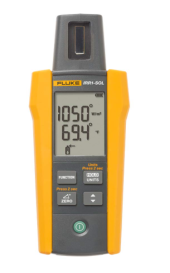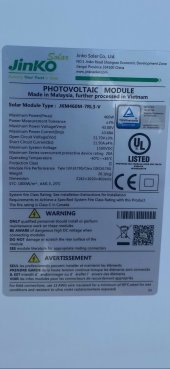methods
New Member
- Joined
- Dec 6, 2021
- Messages
- 173
I have a Growatt SPF 5000 ES landing Monday... so we are just getting started here. I have a lot of experience with low-cost IoT and ... before I go off and reinvent the wheel I want to make sure nobody has already done it.
Inverter Manual

High Level Task
Link the Growatt to the cloud servers for the lowest price possible, without WiFi! When I ran an IoT company for a short period of time... this basically meant
* Intercept the signal with the correct protocol (maybe hardware, maybe WiFi, maybe BLE... we will emulate the phone interface if required)
* Push as little data up to the cloud as possible (you pay by the KB)
To show that I am not a spammer or wanker, here is my list of commonly used parts:
IoT Sim Cards ($1/mo - I bought 10, they do what they say they do)

 www.hologram.io
www.hologram.io
Arduino WiFi intercept modules (buy off Digikey, not Adafruit)
 www.adafruit.com
www.adafruit.com
Arduino 3G (cell) intercept modules (buy off Digikey, not Adafruit)
 www.adafruit.com
www.adafruit.com
Adrduino, most powerful available (buy off Digikey directly)
 www.pjrc.com
www.pjrc.com
When I am programming for an Android Phone, I use MIT App Inventor 2
That is a purely graphical programming language (like LabView) and it exposes EVERY function available on the Android devices. They are working on an Apple core (or they were) but apples sucks for DIY.
For micro processing I use strictly Arduino - but 32bit 600mhz versions that are basically small computers ported for Android
... Anyhow
This is my first post. (and it needs some pictures!)
* I ordered 10pcs of used 460W panels, those are paid for and ready to be picked up
* I ordered a 5KW off grid setup to experiment with
* I have in my possession 42KW of 1C LiFe in really good shape, broken up into 4S 40Ah chunks... heading toward 48V
Obviously...
The Scientific Method requires that we accurately record data so that others can duplicate our experiments. That is why I am here... to share and learn.... SO -> If anyone has done it, save me the time.
I presume the GroWatt (and I have not searched yet) attaches itself to a local WiFi and starts spewing to some web address with a login. I did buy the WiFi dongle, but we may intercept before that.
Options
* Emulate a WiFi hub, intercept and send to Cellular 3G
* Direct wire before the Wifi dongle, figure it out, translate what they want (we can electrically monitor the interface there)
So...
If anyone is into it... that is the sort of stuff I do on the side. I sell nothing, I advertise for no one, I have a lot of experience in strange and deep places. ...
Onward
-methods
Inverter Manual

GROWATT 5kW 5000ES (USA Model) OFF GRID INVERTER & Growatt Transformer Kit
5000W LVM- ES Off-Grid 240V GROWATT Inverter with Solar Charge Controller + integrated GROWATT Split Phase Transformer for true 120V/240V Split Phase Electricity! The GROWATT SPF 5000W LVM-ES is the all-in-one inverter/charger you need to take control of your energy bill. The 5000ES can work...
www.signaturesolar.com
High Level Task
Link the Growatt to the cloud servers for the lowest price possible, without WiFi! When I ran an IoT company for a short period of time... this basically meant
* Intercept the signal with the correct protocol (maybe hardware, maybe WiFi, maybe BLE... we will emulate the phone interface if required)
* Push as little data up to the cloud as possible (you pay by the KB)
To show that I am not a spammer or wanker, here is my list of commonly used parts:
IoT Sim Cards ($1/mo - I bought 10, they do what they say they do)

IoT SIM Card | Hologram
A secure IoT SIM card that provides access to a global cellular network built for M2M data.
 www.hologram.io
www.hologram.io
Arduino WiFi intercept modules (buy off Digikey, not Adafruit)
Search Results for 'WiFi' on Adafruit Industries
Adafruit Industries, Unique & fun DIY electronics and kits : Search Results - Tools Gift Certificates Arduino Cables Sensors LEDs Books Breakout Boards Power EL Wire/Tape/Panel Components & Parts LCDs & Displays Wearables Prototyping Raspberry Pi Wireless Young Engineers 3D printing NeoPixels...
Arduino 3G (cell) intercept modules (buy off Digikey, not Adafruit)
Search Results for '3G' on Adafruit Industries
Adafruit Industries, Unique & fun DIY electronics and kits : Search Results - Tools Gift Certificates Arduino Cables Sensors LEDs Books Breakout Boards Power EL Wire/Tape/Panel Components & Parts LCDs & Displays Wearables Prototyping Raspberry Pi Wireless Young Engineers 3D printing NeoPixels...
Adrduino, most powerful available (buy off Digikey directly)
Teensy® 3.6
When I am programming for an Android Phone, I use MIT App Inventor 2
That is a purely graphical programming language (like LabView) and it exposes EVERY function available on the Android devices. They are working on an Apple core (or they were) but apples sucks for DIY.
For micro processing I use strictly Arduino - but 32bit 600mhz versions that are basically small computers ported for Android
... Anyhow
This is my first post. (and it needs some pictures!)
* I ordered 10pcs of used 460W panels, those are paid for and ready to be picked up
* I ordered a 5KW off grid setup to experiment with
* I have in my possession 42KW of 1C LiFe in really good shape, broken up into 4S 40Ah chunks... heading toward 48V
Obviously...
The Scientific Method requires that we accurately record data so that others can duplicate our experiments. That is why I am here... to share and learn.... SO -> If anyone has done it, save me the time.
I presume the GroWatt (and I have not searched yet) attaches itself to a local WiFi and starts spewing to some web address with a login. I did buy the WiFi dongle, but we may intercept before that.
Options
* Emulate a WiFi hub, intercept and send to Cellular 3G
* Direct wire before the Wifi dongle, figure it out, translate what they want (we can electrically monitor the interface there)
So...
If anyone is into it... that is the sort of stuff I do on the side. I sell nothing, I advertise for no one, I have a lot of experience in strange and deep places. ...
Onward
-methods









